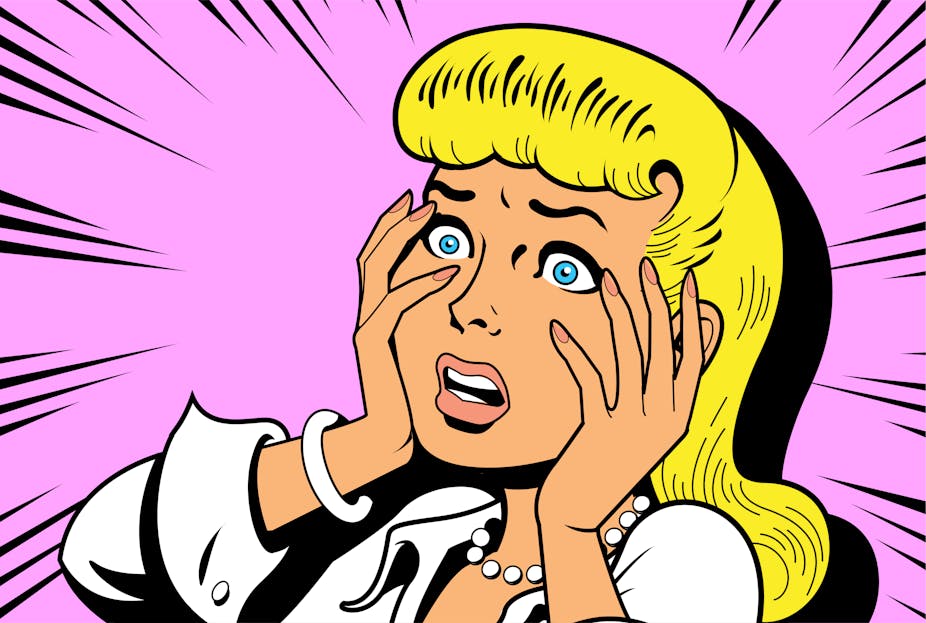It has been 30 years since EastEnders arrived on UK screens to begin chronicling the lives of the denizens of fictional Albert Square in east London. But the history of soap operas goes back a great deal further than that. They first emerged on radio in the US of the early 1930s at the beginning of the Great Depression, arguably starting with Painted Dreams, which followed the lives of Irish-American widow Mother Moynihan and her friends and children.
Probably the most powerful advertising vehicle of their time, soaps were amusingly described in 1948 by James Thurber of the New Yorker as:
A kind of sandwich whose recipe is simple enough, although it took years to compound. Between thick slices of advertising spread 12 minutes of dialogue, add predicament, villainy and female suffering in equal measure, throw in a dash of nobility, sprinkle with tears, season with organ music, cover with a rich announcer sauce and serve five times a week.
Soap-time in the UK
It took the best part of 35 years for the form – having now moved over to television – to migrate to the UK. The pioneer was the BBC’s 1954 offering The Grove Family, a clear response to the imminent arrival of ITV.
Viewing episodes of the drama now is a rather strange experience because of the plummy Home Counties accents with which the lower-middle-class family spoke.
This even applies to the detective who turns up in the first episode, “Prevention and Cure”, which is available for viewing on the British Film Institute website. He provides, in classic Reithian BBC style, advice on how to make your home more burglar-proof.
When Coronation Street arrived six years later on ITV, we see soaps transformed into the mix we know today: characters speaking with strong regional accents who were stereotypically working-class, apart from the fact that most of them were self-employed.
Euro-suds
My own interest in soap operas began in the early 1990s when I became aware of their initially slow arrival in continental Europe. When Germany’s Lindenstraße (Lime Street, clearly modelled to some extent on Coronation Street), launched in 1985, it was the first European soap to appear outside the British isles (Ireland had come in with Tolka Row in 1964).
Yet Lindenstraße was to be the first of many. By the mid-1990s, with the deregulation of broadcasting and the resulting explosion of television channels everywhere, more than 50 domestic soaps were being produced around Europe, most of them leading the local viewer ratings.
The great decline
The scene is very different now. In the course of the past ten years, several of the great American daytime soaps have finally bitten the dust. Guiding Light came to an end in 2009. With around 19,000 episodes, it is undoubtedly the longest-running story in the history of mankind, taking more than 70 years to narrate. It was followed in 2010 by As the World Turns, which had clocked up a mere 14,000 episodes.
Germany has gone from six daily soaps to two, Italy and the Netherlands from three to one, and the form has disappeared entirely from the Swedish television landscape. And the survivors are all suffering from declining viewing figures.
The 1986 Christmas Day episode of EastEnders where publican “Dirty” Den Watts served his wife Angie with divorce papers attracted an audience of 32.5m – half the total UK population. Now it is lucky to attract 10m viewers, peaking at a little more for special anniversary editions. Viewing figures for Coronation Street are broadly similar.
Having studied more than 60 European soaps, I concluded that the British soap in particular constitutes a cultural space where social-democratic values not only remained alive but continued to be seen as central to the characters’ lives. This was despite the fact that such values had ceased to be politically and above all economically dominant following the arrival of neo-liberalism in the 1980s.
Anyone old enough to have watched EastEnders during that decade will recall the fate of the double-barrelled James Willmott-Brown and his yuppie pub, the Dagmar. He was imprisoned for rape and the Dagmar was burned to the ground.
British soaps are about community, and the easiest way to move from being the good guy to being the bad guy is to put yourself first. Even the crims are expected to help out in a crisis – in this case, “Dirty” Den marshalled underworld friends to commit the arson after victim Kathy Beale told him about the rape.
There are many reasons for the declining number of soap viewers. The audience has been fragmented across many more TV channels (as it has for most programme genres). We have also seen reality formats emerging since around the turn of the 2000s, such as Big Brother and I’m a Celebrity, which are much cheaper because they are unscripted – albeit these two shows are perhaps also now reaching the end of their shelf lives.
The technological possibility of “on demand” television has perhaps also taken its toll, particularly with younger audiences. Arguably soaps and their cliffhanger storylines made more sense in the era of “appointment” television, where the latest plot twist was the talking point the next day all over the country.
But there is of course more to it than that. New generations are arriving for whom the old post-war social democratic settlement is not even a distant memory. But soaps no longer appear to be where they look for the means to help them come to terms with it and imagine ways forward.
In a recent paper I argued that soaps were one of the great cultural phenomena of the 20th century. It seems unlikely that we will say the same thing when the time finally comes to look back on the 21st.

